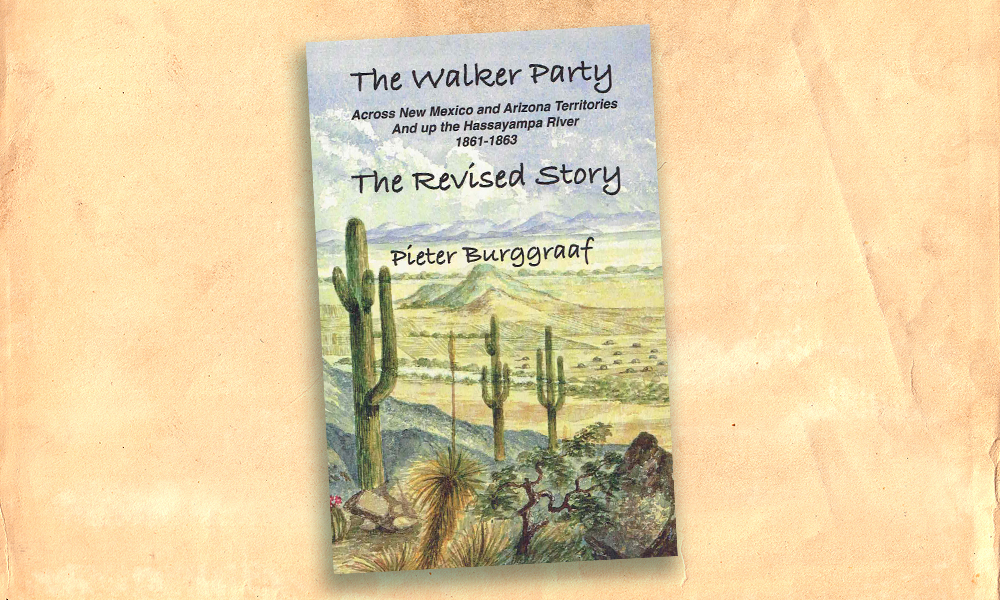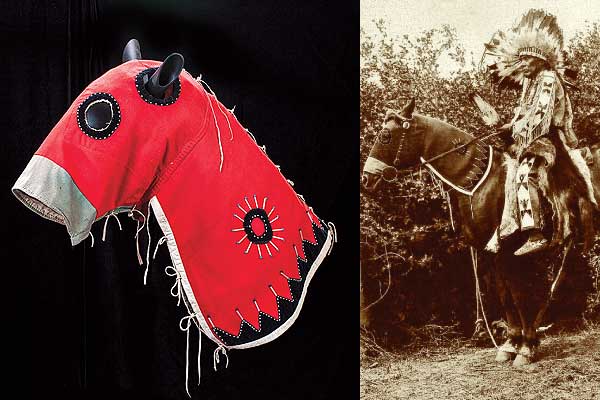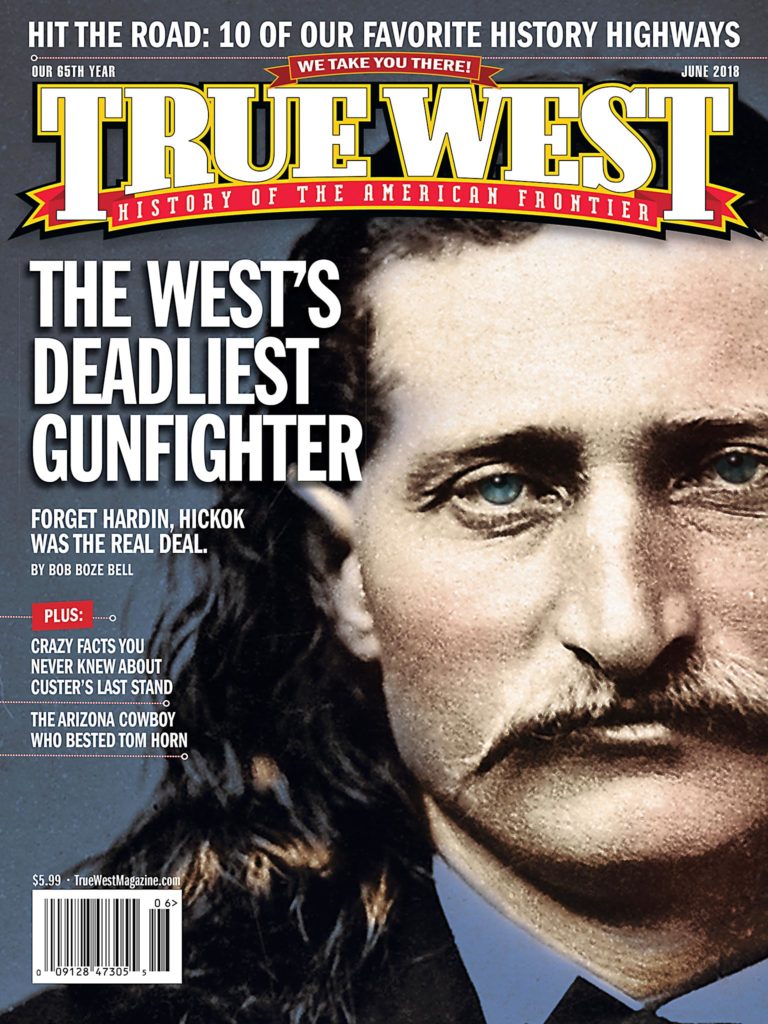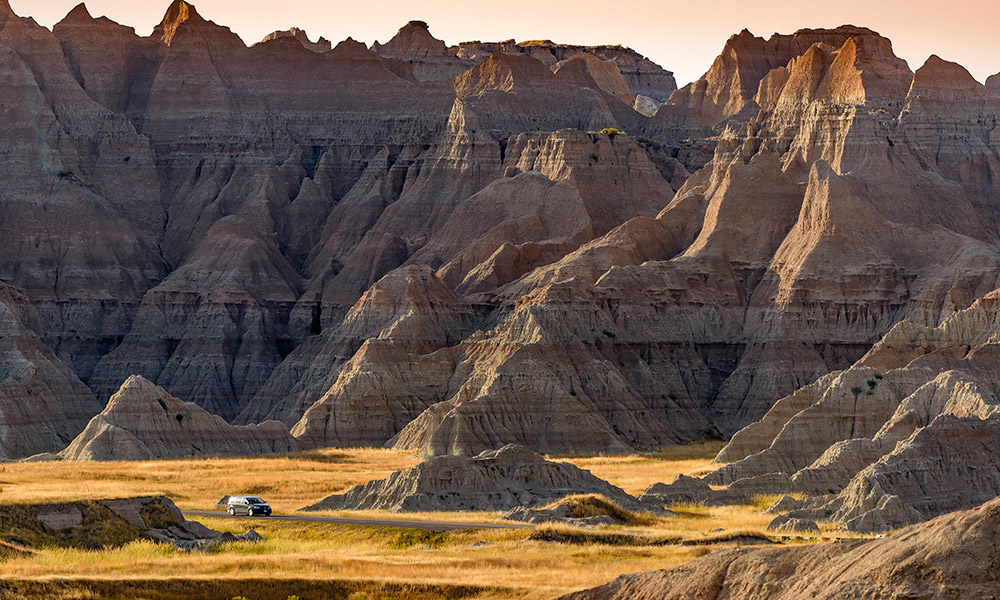
— Chad Coppess, Courtesy South Dakota Office of Tourism —
From the earliest days of conquistadors, explorers, fur trappers and pioneer settlers, the vast grandeur of the American West—and its equally bountiful and unforgiving geography—has inspired travelers to write about it. Like oceangoing adventurers, the earliest Western diarists have inspired generations to go West on foot, horseback, wagon, train or by car. Today, all across the Western United States, the America Byways program of 150 roads in the National Scenic Byways and All-American Roads system and the designated state scenic highways promote heritage travel to and through scenic and historic areas. For our new annual feature on heritage highways, we have created ten road trips that allow travelers to immerse themselves in the history of the regions, tour historic sites and relax in communities that have preserved their pasts for current generations to experience firsthand where history was made.
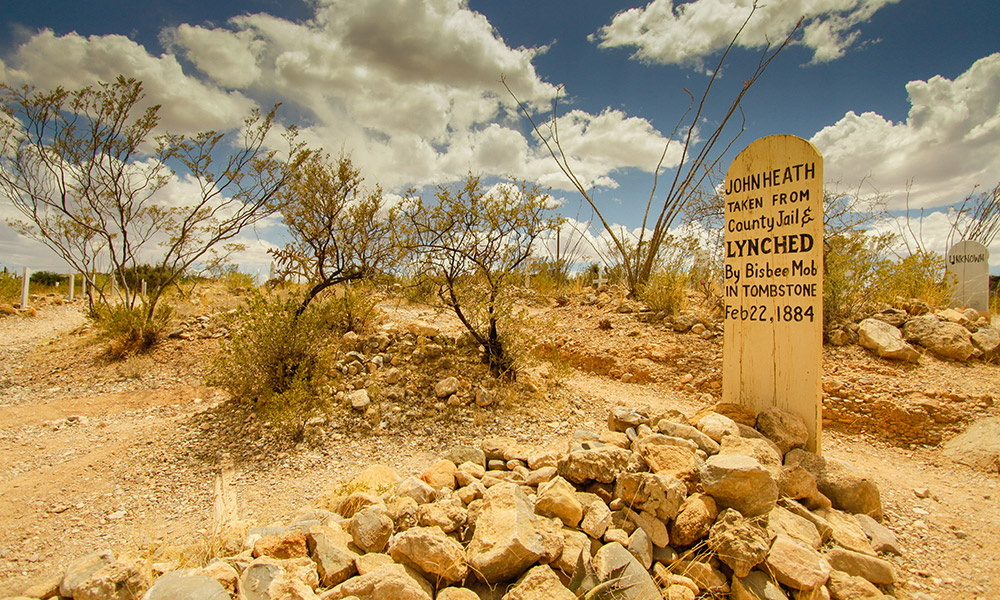
Border Adventure: El Paso, Texas, to Tombstone, Arizona
If you love Old West history, driving West into the sunset from El Paso, Texas, to Tombstone, Arizona, will keep you busy for a week—or a lifetime of experiences in a region that is truly a crossroads of Indian, Spanish, Mexican and American history. Along the route, travelers take a historic walking tour of
El Paso’s Spanish mission district, pay homage to Billy the Kid’s mother in the Silver City cemetery, hike into Fort Bowie past the Butterfield Trail, and walk down Allen Street in Tombstone. They will soon discover that every road leads to a fun-filled immersion in history.
Side Roads
Mileage: El Paso to Tombstone, 293 miles
Don’t Miss in Texas: El Paso’s Mission Trail and a chance to walk in the footsteps of Juan de Onate and Billy the Kid, soldiers and missionaries, outlaws and Rangers along the original El Camino Real, including the San Elizario Jail, the only jail Billy the Kid broke into! After San Elizario, tour the El Paso History Museum and the city’s historic Concordia Cemetery, the final resting place of many notable and notorious characters, including outlaw John Wesley Hardin.
Don’t miss in New Mexico: Along Caballo to Lordsburg via New Mexico Highways 152/90, the historic marker and vistas at Emory Pass Lookout, a tour of Fort Bayard in Silver City and a walking tour of historic downtown Lordsburg. At Silver City, continue to Lordsburg, or turn south to Deming and continue west to Lordsburg on I-10.
Don’t miss in Arizona: Fort Bowie National Historic Site, just south of the Bowie exit on I-10. A three-mile round-trip hike brings you face-to-face with history and the legacy of the Apache Wars. Can’t hike? Directions to limited parking are at NPS.gov/FOBO.
Where to Stay: Gardner Hotel, El Paso, TX; Palace Hotel, Silver City, NM; Landmark Lookout Lodge, Tombstone, AZ
Where to Eat: L&J Café, El Paso, TX; Ramona’s Café, Lordsburg, NM; Big Nose Kate’s, Tombstone, AZ
What to Read: Paul Andrew Hutton’s The Apache Wars; Bob Boze Bell’s Classic Gunfights, Volume 2, The 25 Gunfights Behind the O.K. Corral; Casey Tefertiller’s Wyatt Earp: The Life Behind the Legend
If I Had All Summer: I’d start in El Paso and drive all the way to San Francisco, California, retracing the Western half of the original Butterfield Overland Trail.
Best Websites: VisitElPaso.com; NewMexico.org; ExploreCochise.org
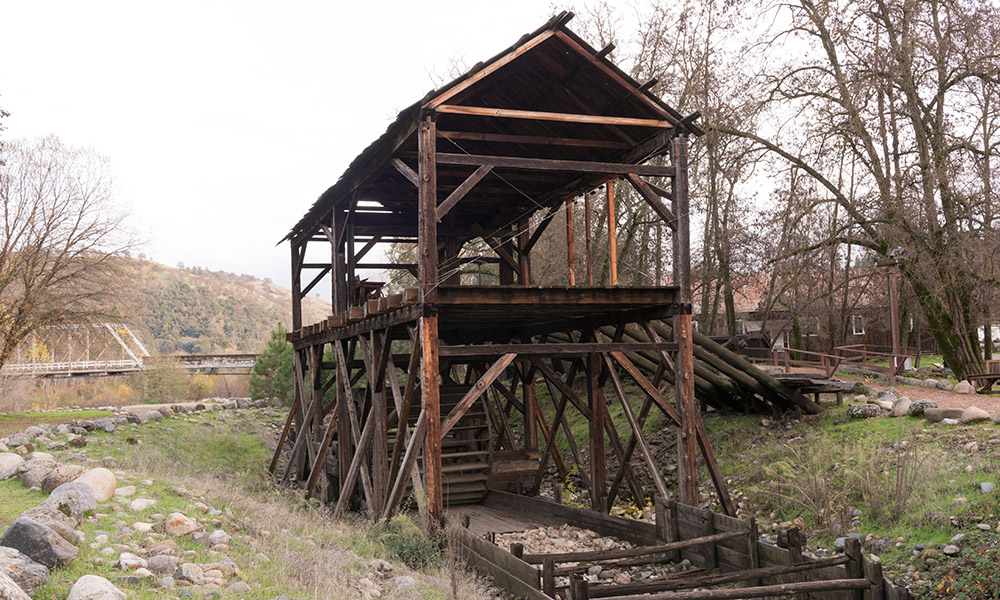
— Courtesy The Jon B. Lovelace Collection of California Photographs in Carol M. Highsmith’s America Project, Library of Congress —
Golden Road: California’s Historic Highway 49
In honor of the upcoming 170th anniversary of the California Gold Rush in 2019, consider a tour of Gold Country on California Highway 49 from Vinton, north of Lake Tahoe, to Oakhurst, just outside Yosemite National Park. The tour can be done on day trips, long weekends or a week to two-week road trips. Or, if you have the time, all summer. Take your time, enjoy the unique characteristics of the Sierra Nevada communities along Highway 49. Each has its own historic sites, museums, art galleries, restaurants and hotels. Savor the experience, as the unique region is one of the most beautiful in the West.
Side Roads
Mileage: Vinton to Oakhurst, 295 miles
Don’t Miss: Three of California’s best state parks: Empire Mine State Park, Grass Valley; Marshall Gold Discovery State Park, Coloma; and Columbia State Historic Park and Museum, Columbia.
Where to Stay: Old Sierra City Hotel, Sierra City; Holbrooke Hotel, Grass Valley; Coloma Country Inn, Coloma; Fallon Hotel, Columbia State Park, Columbia; Sierra Sky Ranch, Oakhurst
Where to Eat: Two Rivers Café, Downieville; Angels Creek Café, Angels Creek; Yosemite Coffee & Roasting Company, Oakhurst
What to Read: Mark Twain’s Roughing It; Frank Lorey’s A Guide to the Gold Rush Country of California; H.W. Brands’ The Age of Gold: The California Gold Rush and the New American Dream
If I Had All Summer: I would explore the history of the Gold Rush in Northern California, with Mark Twain’s Roughing It as my guide.
Best Websites: HistoricHwy49.com; VisitCalifornia.com; NPS.gov
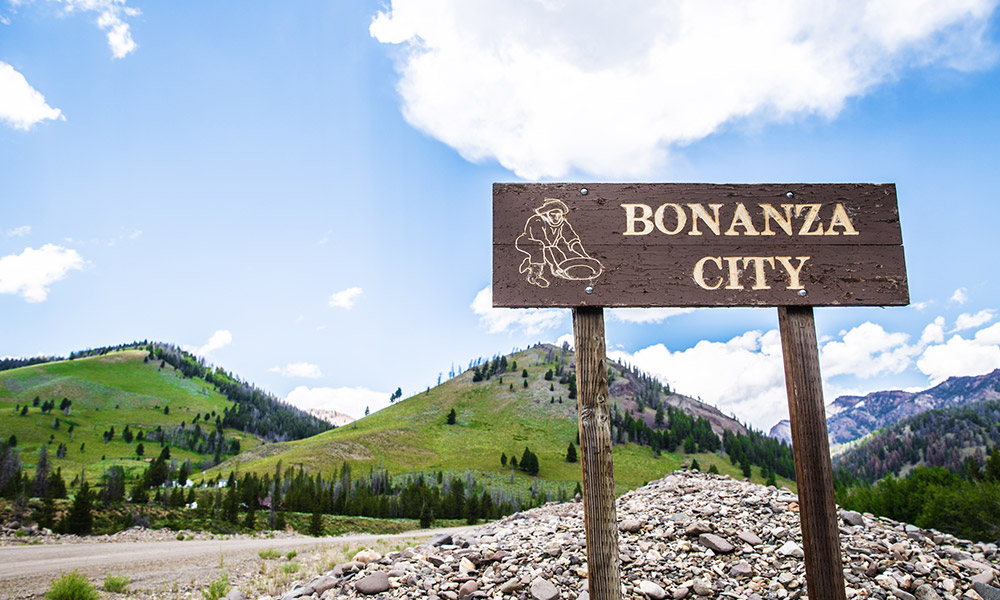
— Courtesy Idaho Tourism —
Idaho’s Historic Byways: Boise to Gibbonsville
A beautiful historic drive on two of Idaho’s most stunning highways—the Ponderosa Pine Scenic Byway from Boise to Stanley, and the Salmon River Scenic Byway from Stanley to the Montana border just north of Gibbonsville—offers never-ending spectacular scenery and geography and historic sites marking events that happened along these marvelous mountain highways.
Side Roads
Mileage: Boise to Gibbonsville, 292 miles
Don’t Miss: The scenic highways from Boise to Gibbonsville. These remarkable scenic byways have numerous back roads, historic sites and small towns to enjoy along the way, including the Sacajawea Interpretive, Cultural & Educational Center in Salmon, one of the only museums in the country dedicated to memorializing the life and history of an American Indian woman. And, if you love mining history, visit Idaho City, Placerville, Bonanza, the Yankee Fork Dredge, Custer, Bayhorse, Clayton and Leesburg.
Where to Stay: Sawtooth Hotel, Stanley; Diamond D Ranch, Stanley; Ramey’s Broken Arrow Resort, Gibbonsville
Where to Eat: Cyndie’s, Idaho City; Elk Mountain Resort Restaurant, Stanley; Shuswap Pie Company, Salmon
What to Read: Betty Derig’s Roadside History of Idaho; Stephen Ambrose’s Undaunted Courage; Candy Moulton’s Chief Joseph: Guardian of the People
If I Had All Summer: I would pan for gold near Idaho City, explore all the ghost towns between Boise and Salmon, take a guided backcountry horse pack trip into the Sawtooth Wilderness and raft down the Salmon River from Salmon to McCall.
Best Websites: VisitIdaho.org; NPS.gov; FS.USDA.gov
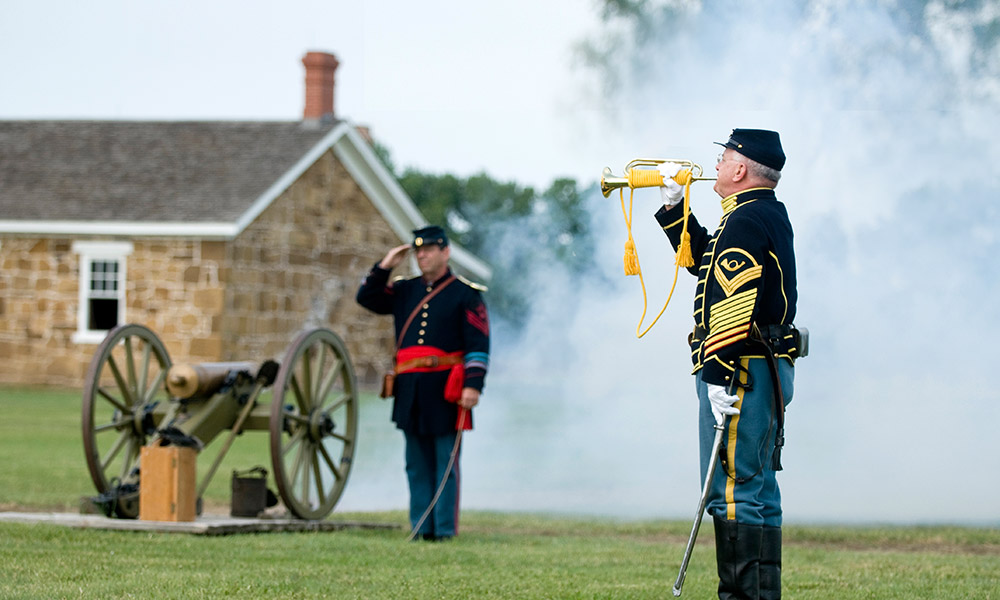
— Courtesy NPS.gov —
The Santa Fe Trail: Independence, Missouri, to Elkhart, Kansas
Start from the east or the west and follow one of the most historic routes across the Central Plains—the Santa Fe National Historic Trail across the Sunflower State. Just across the Kansas border in Independence, Missouri, visit the National Frontier Trails Museum for a primer on Santa Fe Trail history. Five cities are perfect destinations for exploring segments of the historic route: Fort Leavenworth, Lyons, Fort Larned, Dodge City and Elkhart.
Side Roads
Mileage: Independence, Missouri, to Elkhart, Kansas, 471 miles
Don’t Miss: National Frontier Trails Museum in Independence, Missouri, to start a journey on the Santa Fe Trail across Missouri and Kansas. Along the route, take your time to enjoy the museums, parks, historic sites and welcoming communities that preserve and promote Kansas’s segment of the trail. The drive on US 56 from Dodge City to Elkhart through the Cimarron National Grasslands is the perfect way to finish this Santa Fe Trail adventure.
Where to Stay: Flying W Ranch, Clements, KS; Midland Railroad Hotel, Wilson, KS; Boot Hill Casino & Resort, Dodge City, KS
Where to Eat: All Slabbed Up, Leavenworth, KS; El Dos de Oros, Larned, KS; Big C’s Sandwich Shop, Elkhart, KS
What to Read: Josiah Gregg’s Commerce of the Prairies; Mary Allbeck’s Traveling the Santa Fe Trail in the 21st Century; Max McCoy’s Elevations: A Personal Exploration of the Arkansas River
If I Had All Summer: I’d drive the length of the Santa Fe National Historic Trail from St. Joseph, Missouri, to Santa Fe, New Mexico.
Best Websites: SantaFeTrail.org; NPS.gov; TravelKS.com; FS.USDA.gov
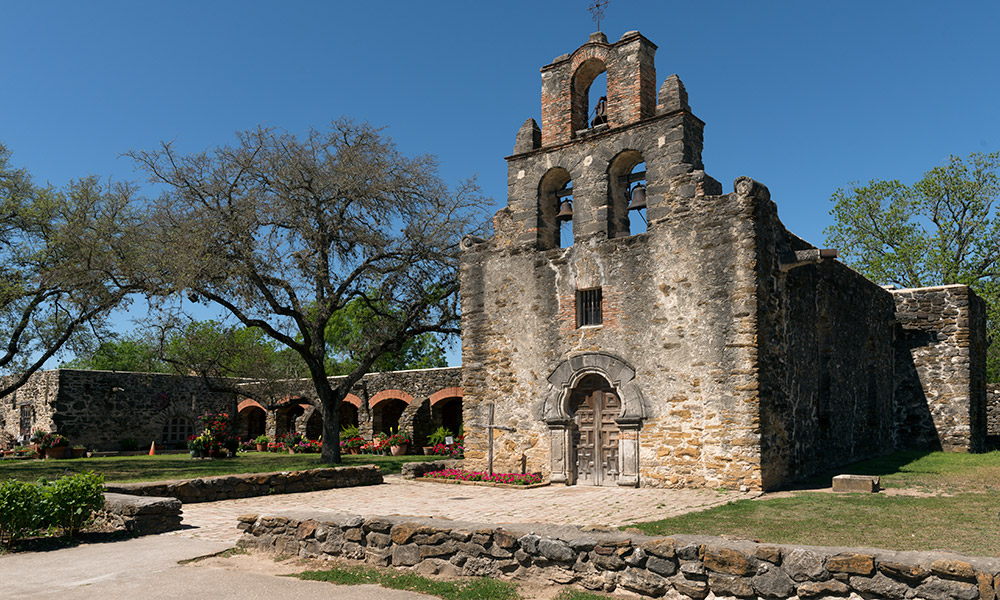
— Courtesy The Lyda Hill Texas Collection of Photographs in Carol M. Highsmith’s America Project, Library of Cono —
Tricentennial Celebration: San Antonio and the Texas Hill Country
Discover 300 years of history and heritage in San Antonio and the Texas Hill Country during the Mission City’s tricentennial. The San Antonio Missions National Historical Park, including the Alamo, is a UNESCO World Heritage Site. San Antonio abounds in extraordinary museums, restaurants, hotels and, of course, the acclaimed River Walk. From the city, drive to and visit the culturally rich and geographically diverse Hill Country communities just outside San Antonio, including Bandera, Kerrville, Fredericksburg, Boerne and New Braunfels. Bandera, known as “The Cowboy Capital of the World,” has numerous guest ranches for an extended, relaxing retreat of Texas hospitality, history and culture.
Side Roads
Mileage: The Alamo and San Antonio; drive northwest into the Hill Country, tour Bandera, Kerrville, Fredericksburg and New Braunfels, returning to San Antonio’s Mission Concepcion and the Mission Road to the three other missions south of the city along the San Antonio River, 211 miles
Don’t Miss: Walking the grounds of San Antonio’s Spanish Missions, which will host a World Heritage Festival tricentennial celebration Sept. 5-8, 2018. If you love museums, in San Antonio, tour The Witte Museum, The Briscoe Western Art Museum and the Buckhorn’s Ranger Museum; in Bandera, The Frontier Times Museum; in Kerrville, Museum of Western Art, and in Fredericksburg, the Pioneer Museum & Village Complex.
Where to Stay: The Menger Hotel, San Antonio; Flying L Hill Country Resort, Bandera; Gruene River Hotel and Retreat, New Braunfels
Where to Eat: Rosario’s, San Antonio; Buckhorn Saloon & Café, San Antonio; OST Restaurant, Bandera; Buzzie’s Bar-B-Q, Kerrville; Jennie’s Smoked Burgers, Fredericksburg
Books for the Road: Leon C. Metz’s Roadside History of Texas; William Groneman’s David Crockett: Hero of the Common Man; Rudy Felix Casanova’s San Antonio, City for a King: An Account of the Colonial History of San Antonio and Texas
If I Had All Summer: In honor of Spain’s founding San Antonio 300 years ago and the recent 150th anniversary of the Chisholm Trail, I would rent a house in Bandera and explore the El Camino Real de los Tejas National Historic Trail, the Chisholm Trail and the Western Trail—known also as the Great Western Trail— which went through San Antonio and Bandera to Dodge City, Kansas, and beyond.
Best Websites: Hill-Country-Visitor.com; VisitSanAntonio.com; NPS.gov
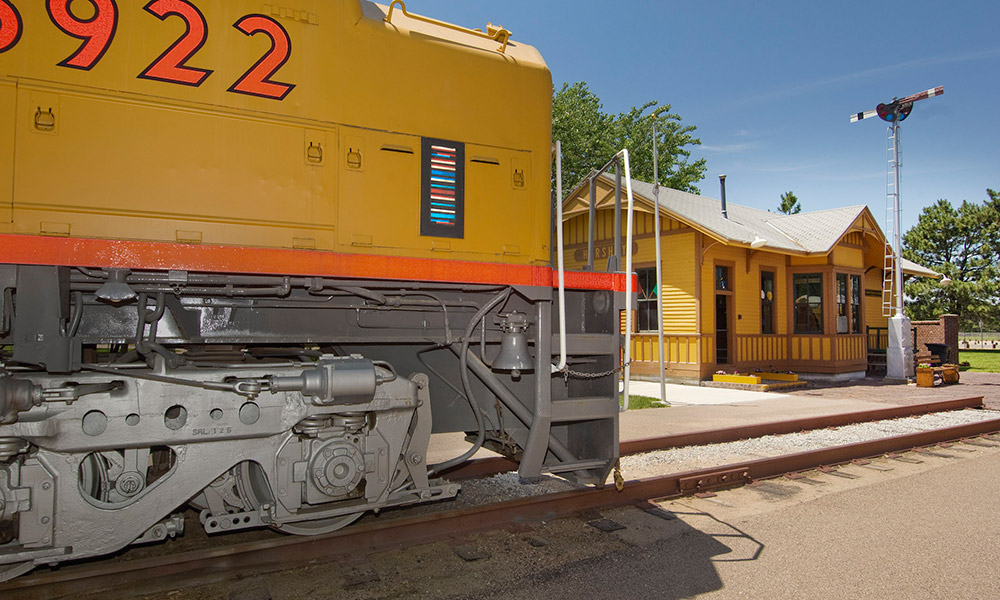
— Courtesy Nebraska Tourism —
Follow the Rails: Council Bluffs, Iowa, to Ogallala, Nebraska
In the summer of 1868, the Union Pacific had completed its rails across Nebraska and was laying track across Wyoming toward Promontory Summit in Utah.
Today, modern travelers can retrace that route from Omaha, Grand Island, Kearney, North Platte and Ogallala. A series of excellent museums in Council Bluffs, Iowa, followed by a tour of the Durham Museum in Omaha, in the city’s former Union Station, are great ways to kick off a tour of Cornhusker State on historic US 30.
Side Roads
Mileage: Council Bluffs, Iowa, to Ogallala, Nebraska, 334 miles
Don’t Miss: Starting your road trip in Council Bluffs, Iowa, mile zero of the Union Pacific. After a tour of Council Bluffs and Omaha, head west on US 30 to Grand Island’s Stuhr Museum of the Prairie Pioneer; continue on to Fort Kearny State Historical Park and The Archway in Kearney; Buffalo Bill Ranch State Historical Park and Union Pacific Bailey Yard/Golden Spike Tower in North Platte; and Nebraska National Trails Museum and Front Street and Cowboy Museum in Ogallala.
Where to Stay: Magnolia Hotel, Omaha, NE; Hampton Inn, Kearney, NE; Lonesome Dove Lodge, Ogallala, NE
Where to Eat: Orsi’s Italian Bakery and Pizzeria, Omaha, NE; Lincoln Highway Diner, North Platte, NE; Golden Spur Steakhouse & Grill, Ogallala, NE
What to Read: Candy Moulton’s Roadside History of Nebraska; Will Bagley’s So Rugged and Mountainous: Blazing the Trails to Oregon and California, 1812–1848; Stephen E. Ambrose’s Nothing Like It In the World: The Men Who Built the Transcontinental Railroad, 1863-1869
If I Had All Summer: I’d follow the route of the first transcontinental rail line from Council Bluffs, Iowa, to Sacramento, California.
Best Websites: TravelIowa.com; VisitNebraska.com; UP.com
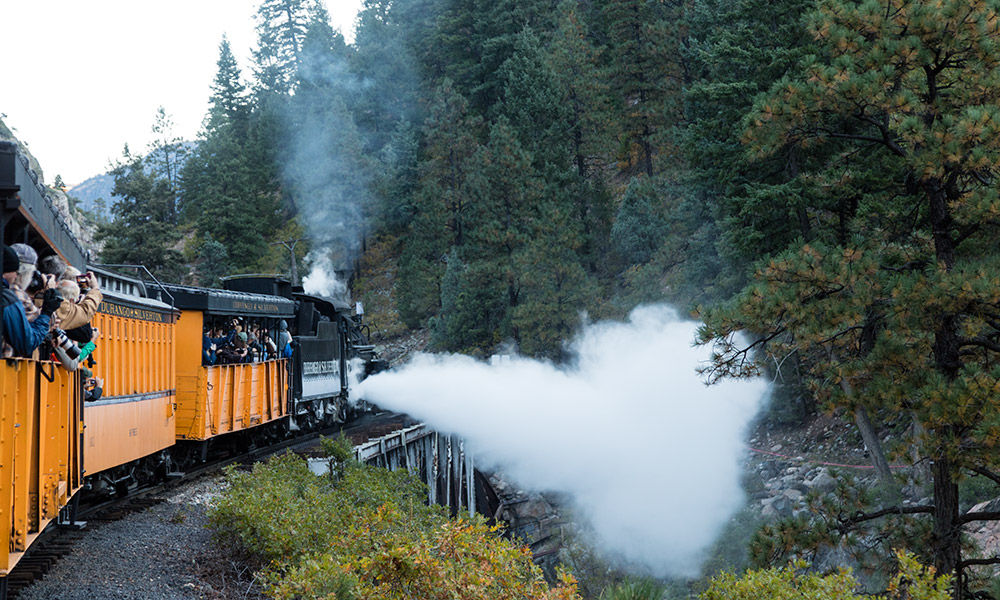
— Courtesy Gates Frontiers Fund Colorado Collection within the Carol M. Highsmith Archive, Library of Congress —
San Juan Mountains of Colorado
The historic San Juan Mountains region of Southwestern Colorado is an extraordinary location for an immersive Old West vacation. From the historic loop of towns on the San Juan Skyway—Dolores, Telluride, Ridgway, Ouray, Silverton, Durango, Mancos and Cortez (although Cortez is officially just off the loop, I include it because it is close to Mesa Verde National Park—to the Durango-Silverton Narrow Gauge Railroad, the region is guaranteed to inspire you to return year after year for another San Juan Skyway experience.
Side Roads
Mileage: San Juan Skyway, 236 miles
Don’t Miss: Driving the spectacular San Juan Skyway through Colorado’s San Juan Mountains. If you are visiting for the first time, I would not miss a round-trip on the Durango-Silverton Narrow Gauge Railroad, a tour of Mesa Verde National Park, a multi-day round trip on the San Juan Skyway and Million Dollar Highway, a dip in the hot springs in Ouray, a walk through the park in Ridgway where John Wayne’s True Grit was filmed and a summer gondola ride to the top of the mountain above Telluride.
Where to Stay: The Strater Hotel, Durango; Grand Imperial Hotel, Silverton; Hotel Ouray, Ouray
Where to Eat: Diamond Belle Saloon, Durango; Handlebars Restaurant & Saloon, Silverton; Brown Dog Pizza, Telluride
What to Read: Duane A. Smith’s Rocky Mountain Boom Town: A History of Durango, Colorado; Virginia McConnell Simmons’ The Ute Indians of Utah, Colorado, and New Mexico; Branson Reynolds’s One Drive in a Million: A Mile-by-Mile guide to Southwest Colorado’s San Juan Skyway and Million Dollar Highway
If I Had All Summer: I’d rent a cabin near Ridgway and explore, photograph, camp and fish along the back roads of the San Juans.
Best Websites: CODOT.gov; Durango.org; Colorado.com; NPS.gov
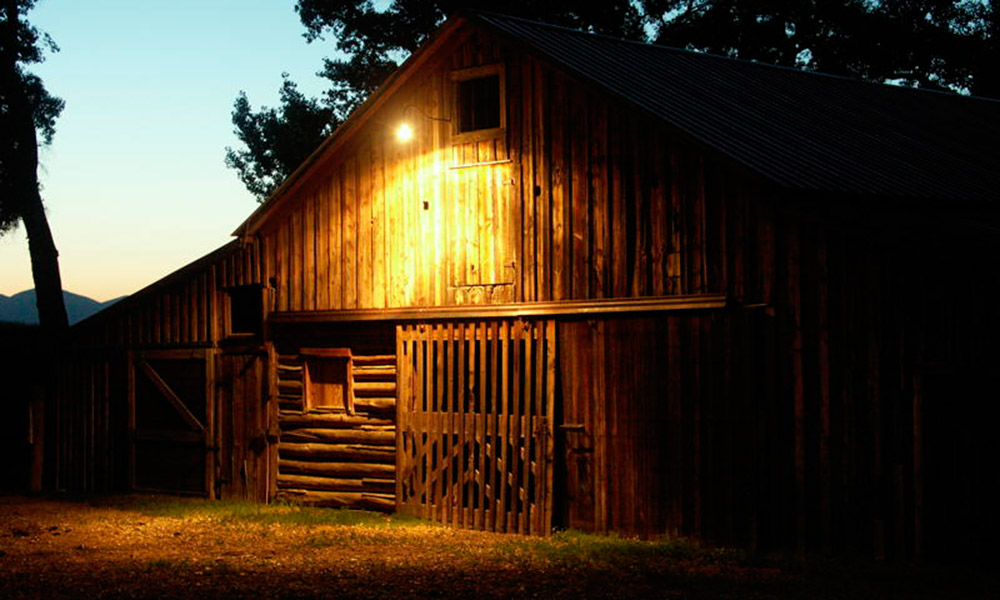
— Courtesy Wyoming Office of Tourism —
Following the Guidon: Wyoming to Montana
A driving tour from Casper, Wyoming, through Kaycee, Buffalo and Sheridan, Wyoming, and the Crow Agency, Garryowen, and Billings, just northwest of Little Bighorn Battlefield National Monument, is one of the most significant historic journeys that can be made in the region. Along the route, the Old West tour intersects with numerous battle sites, monuments and museums that tell the dramatic history of the region. Make sure to schedule extra time for backcountry trips into the Bighorn Mountains, which loom high above the Powder River Valley.
Side Roads
Mileage: Casper, Wyoming, to Crow Agency, Montana, 217 miles
Don’t Miss: Following the Army’s trail across Wyoming and Montana to Fort Casper Museum, Fort Fetterman Historic Site, Fort Phil Kearny Historic Site, Rosebud Battlefield State Park and Little Bighorn Battlefield National Monument. Local museums not to miss include Kaycee’s Hoofprints of the Past Museum, Buffalo’s The Jim Gatchell Memorial Museum, Sheridan’s The Brinton Museum and Garryowen’s Custer Battlefield Museum.
Where to Stay: The Historic Occidental Hotel & Saloon, Buffalo, WY; The Historic Sheridan Inn, Sheridan, WY; Dude Rancher Lodge, Billings, MT
Where to Eat: Invasion Bar and Restaurant, Kaycee, WY; The Busy Bee Café, Buffalo, WY; Montana Brewing Company, Billings, MT
What to Read: TJ Stiles’s Custer’s Trials; Bob Drury and Tom Clavin’s The Heart of Everything That Is: The Untold Story of Red Cloud, An American Legend; Paul
WL. Hedren’s After Custer: Loss and Transformation in Sioux Country
If I Had All Summer: I’d rent a cabin in the Bighorn Mountains and explore the entire region by car, on horseback and by foot.
Best Websites: NPS.gov; WYOParks.wy.us; StateParks.MT.gov
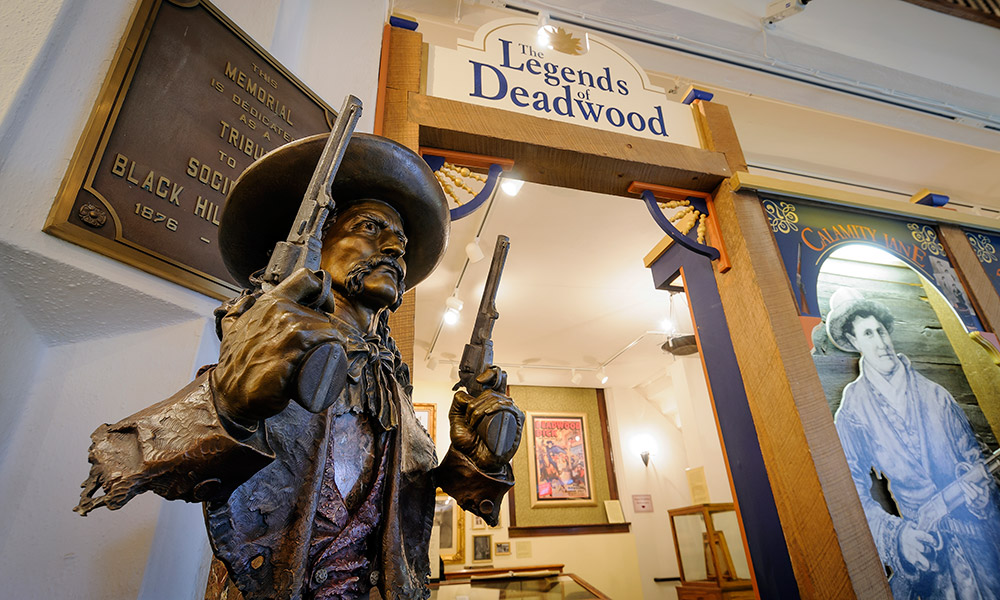
— Courtesy Chad Coppess, South Dakota Office of Tourism —
South Dakota Black Hills Loop
A tour of the Black Hills will immerse the traveler in the history of one of the most unique mountain ranges in the United States. Historic sites and museums abound in the mystic mountains. The Crazy Horse Memorial and Mt. Rushmore National Memorial should be on everyone’s bucket list, but don’t overlook a visit to Evans Plunge in Hot Springs, a hike up Black Elk’s Peak near Custer State Park and a pilgrimage to Wild Bill Hickok and Calamity Jane’s graves in the Mt. Moriah Cemetery above Deadwood.
Side Roads
Mileage: From Rapid City, a round trip to many of the sites, as far south as Hot Springs and as far north as Deadwood, 232 miles.
Don’t Miss: The summer festivals held every year in the Black Hills, including Deadwood’s Wild Bill Days, June 15-16, 2018 (Bob Boze Bell will be attending!) and Days of 76, July 24-26, 2018. The 1880 Train in Hill City opens May 7 and is a great experience for the whole family, as is Custer State Park’s Wildlife Loop, Mt. Rushmore, Crazy Horse Memorial and Wind Cave National Park.
Where to Stay: Hisega Lodge, Rapid City; The Bullock Hotel, Deadwood; Custer State Park, Custer; Triple R Ranch, Keystone
Where to Eat: Desperados Cowboy Restaurant, Hill City; Sugar Shack, Deadwood; Steerfish Steak & Smoke, Spearfish
What to Read: Bob Boze Bell’s The Illustrated Life and Times of Wild Bill Hickok: The First Gunfighter; Terry Mort’s Thieves’ Road: The Black Hills Betrayal and Custer’s Path to Little Bighorn; Paul Horsted’s Exploring with Custer: The 1871 Black Hills Expedition
If I Had All Summer: I’d rent a cabin in the Black Hills and roam the parks, towns, back roads and historic sites from Memorial Day to Labor Day.
Best Websites: TravelSouthDakota.com; BlackHillsBadlands.com; Deadwood.com
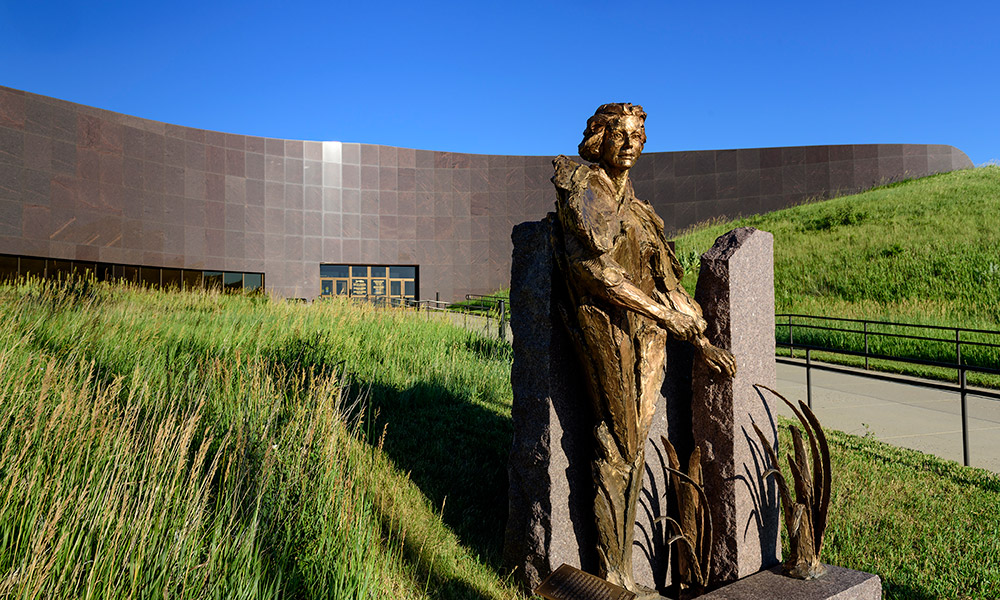
— Courtesy Chad Coppess, South Dakota Office of Tourism —
The Lewis and Clark Trail: South Dakota to North Dakota
The heritage and history of the Upper Missouri includes the earliest history of Euro-American exploration on the Northern Plains. The Lewis and Clark National Historic Trail follows the Upper Missouri from Fort Pierre through Pierre, South Dakota, to Bismarck, Minot and Fort Union Trading Post near Williston, North Dakota. Start the tour at Fort Pierre, where in 2017 the state of South Dakota celebrated its bicentennial, and follow it north along the banks of the Missouri River to the legendary confluence of the Missouri and Yellowstone rivers near Williston.
Side Roads
Mileage: Fort Pierre, South Dakota, to Bismarck, North Dakota, to Minot, North Dakota, to Fort Union Trading Post National Historic Site, Williston, North Dakota, 475 miles
Don’t Miss: The remarkable historical sites and museums on the route, including the Verendrye Monument National Historic Landmark in Fort Pierre, the South Dakota Discovery Center in Pierre, the North Dakota Heritage Center & State Museum in Bismarck, the North Dakota Lewis & Clark Interpretive Center in Washburn and the Missouri-Yellowstone Confluence Interpretive Center and Fort Union Trading Post near Williston.
Where to Stay: Cheyenne Ridge Signature Lodge, Pierre, SD; Staybridge Suites, Bismarck, ND; The Williston Boutique Hotel, Williston, ND
Where to Eat: Cattleman’s Club Steakhouse, Pierre, SD; The Little Cottage Café, Bismarck, ND; Dakota Farms Family Restaurant, Williston, ND
What to Read: Meriwether Lewis and William Clark’s The Journals of Lewis and Clark; Elizabeth A. Fenn’s Encounters at the Heart of the World: A History of the Mandan People; Tracy Potter’s Steamboats in Dakota Territory: Transforming the Northern Plains
If I Had All Summer: I’d follow the Lewis and Clark National Historic Trail from St. Louis, Missouri, to Astoria, Oregon.
Best Websites: NPS.gov; TravelSouthDakota.com; NDTourism.com


